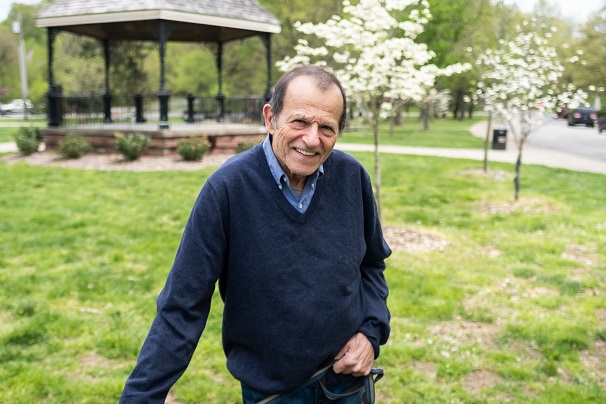It was recently announced, here in Louisville, Ky., that a large, long-empty former Toys “R” Us store in an important strip center would soon be empty no longer.
In the partition of space, one side would be taken over by Marshall’s, the TJX Cos. stablemate of TJ Maxx. And the other, smaller side would accommodate an expansion by an existing next-door neighbor, Whole Foods Market.
This is a successful, always-busy Whole Foods location with already plenty of space. What need for the extra square footage? One of the blessings of most Whole Foods stores is that they aren’t miles and miles of aisles. Whole Foods’ special, curated brand selections would suggest that it doesn’t need a longer cereal aisle, more pet food or home healthcare offerings or a section devoted to seasonal items like beach umbrellas and outdoor folding chairs – or even an expanded back-of-house.
So what’s Whole Foods up to? Actually, the real question here is: What’s Amazon up to? This is apparently part of an Amazon Grand Plan. (Jeff Bezos seems to have nearly as many “plans for that” as Elizabeth Warren.)
A New York Times headline in late July summed it up succinctly: “Amazon Wants to Rule the Grocery Aisles, and Not Just at Whole Foods.”
The article reported of an internal 2017 memo, called “Grocery Shopping for Everyone” and written like a news release (as apparently are all strategic pitches at Amazon), that suggested:
Advertisement
“The new stores would have robust sections for produce, fresh food and prepared meals. Non-perishable products, like paper towels or canned beans, would be stored on a separate floor, away from customers. Shoppers could order those items with an app, and while they shopped for fresh food, the other products would be brought down in time for checkout. There would also be an area to pick up groceries ordered online and to manage packages for delivery drivers.”
It was only a couple of months after that when Amazon announced its $13 billion acquisition of Whole Foods, two years ago this month. What was the return on that $13 billion, the equivalent for the $232 trillion company of buying a used car? World domination of the $12 trillion grocery industry.
The investment community followed a hunch that this was simply not good news for Kroger, Walmart, Publix, ShopRite and the rest, whose stocks plummeted just on the name recognition of the two new partners. Even if it didn’t seem to make sense, hell, it’s Amazon! So it made sense.
It has not been without challenges and setbacks, but Amazon considers the whole experiment a triumph. High-quality fresh foods may not be Amazon’s strength, but delivery is. From the inception of its Whole Foods acquisition, Amazon considered enlarging a non-retail space where consumers’ online shopping baskets could be sorted and assembled for pick-up or home delivery.
And one operating principle, from the start, was that the traditional Whole Foods shopper wouldn’t mind the premiums to have packaged goods as well as fresh items delivered to their homes.
As the Times article pointed out, “Within six months, Amazon began making two-hour deliveries from Whole Foods in four cities for Prime members. Six months later, that had expanded to more than two dozen cities. It’s now available in 90 … [D]eliveries have [made up] almost all of Whole Foods’ growth.”
Advertisement
Which might explain Amazon’s desire to attach empty spaces to the main store. And more, according to the Times: “Rather than substantially expand Whole Foods, several former employees said, Amazon is considering designing [new] stores specifically with pickup and delivery in mind, and with a smaller area dedicated to fresh shopping.
“…While it is unclear what hybrid design Amazon has in the works, a recent job posting for a store designer on ‘an exciting new team’ was looking for someone interested in ‘creating multiple customer experiences under one roof.’”
The Times interviewed a number of current and former Whole Foods employees for its article. A former member of Amazon’s grocery operations suggested that, “People really need to understand – Whole Foods is the beginning, it’s not the end.”
Which has become familiar and ominous Amazon messaging to traditional retailers for the past 20-some years.
As a journalist, writer, editor and commentator, Steve Kaufman has been watching the store design industry for 20-plus years. He has seen the business cycle through retailtainment, minimalism, category killers, big boxes, pop-ups, custom stores, global roll-outs, international sourcing, interactive kiosks, the emergence of China, the various definitions of “branding” and Amazon.com. He has reported on the rise of brand concept shops, the demise of brand concept shops and the resurgence of brand concept shops. He has been an eyewitness to the reality that nothing stays the same, except the retailer-shopper relationship.


 Photo Gallery2 days ago
Photo Gallery2 days ago
 Headlines1 week ago
Headlines1 week ago
 Headlines2 weeks ago
Headlines2 weeks ago
 Sector Spotlight2 weeks ago
Sector Spotlight2 weeks ago
 Headlines1 week ago
Headlines1 week ago
 Headlines3 days ago
Headlines3 days ago
 Headlines1 week ago
Headlines1 week ago
 Designer Dozen1 week ago
Designer Dozen1 week ago














